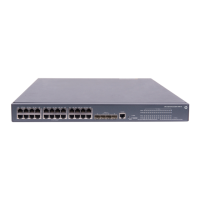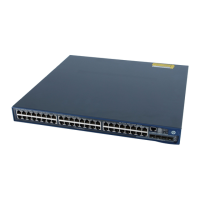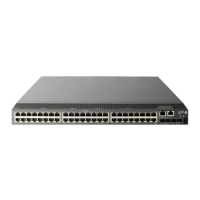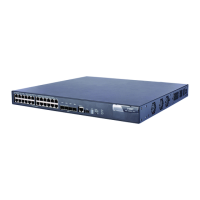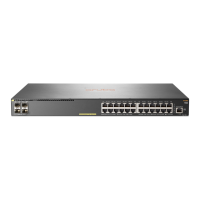332
Figure 88 DR election
Join message
Ethernet
Ethernet
RPDR
DR
Hello message
Register message
Source
Receiver
Receiver
As shown in Figure 88, the DR election process is as follows:
1. Routers on the multi-access network send hello messages to one another. The hello messages
contain the router priority for DR election. The router with the highest DR priority will become the
DR.
2. In the case of a tie in the router priority, or if any router in the network does not support carrying
the DR-election priority in hello messages, the router with the highest IPv6 link-local address will win
the DR election.
When the DR works abnormally, a timeout in receiving hello message triggers a new DR election
process among the other routers.
RP discovery
The RP is the core of an IPv6 PIM-SM domain. For a small-sized, simple network, one RP is enough for
forwarding IPv6 multicast information throughout the network, and the position of the RP can be statically
specified on each router in the IPv6 PIM-SM domain. In most cases, however, an IPv6 PIM-SM network
covers a wide area and a huge amount of IPv6 multicast traffic must be forwarded through the RP.
To lessen the RP burden and optimize the topological structure of the RPT, you can configure multiple
candidate-RPs (C-RPs) in an IPv6 PIM-SM domain. Among them, an RP is dynamically elected through the
bootstrap mechanism. Each elected RP serves a different multicast group range. For this purpose, you
must configure a bootstrap router (BSR). The BSR serves as the administrative core of the IPv6 PIM-SM
domain. An IPv6 PIM-SM domain can have only one BSR, but can have multiple candidate-BSRs (C-
BSRs). If the BSR fails, a new BSR is automatically elected from the C-BSRs to avoid service interruption.
NOTE:
• An RP can serve IPv6 multiple multicast groups or all IPv6 multicast groups. Only one RP can serve a
given IPv6 multicast group at a time.
• A device can serve as a C-RP and a C-BSR at the same time.
As shown in Figure 89, each C-RP periodically unicasts its advertisement messages—C-RP-Adv
messages—to the BSR. A C-RP-Adv message contains the address of the advertising C-RP and the IPv6
multicast group range that it serves. The BSR collects these advertisement messages and chooses the
appropriate C-RP information for each multicast group to form an RP-set, which is a database of
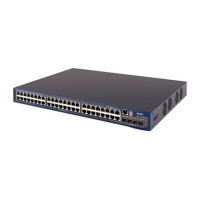
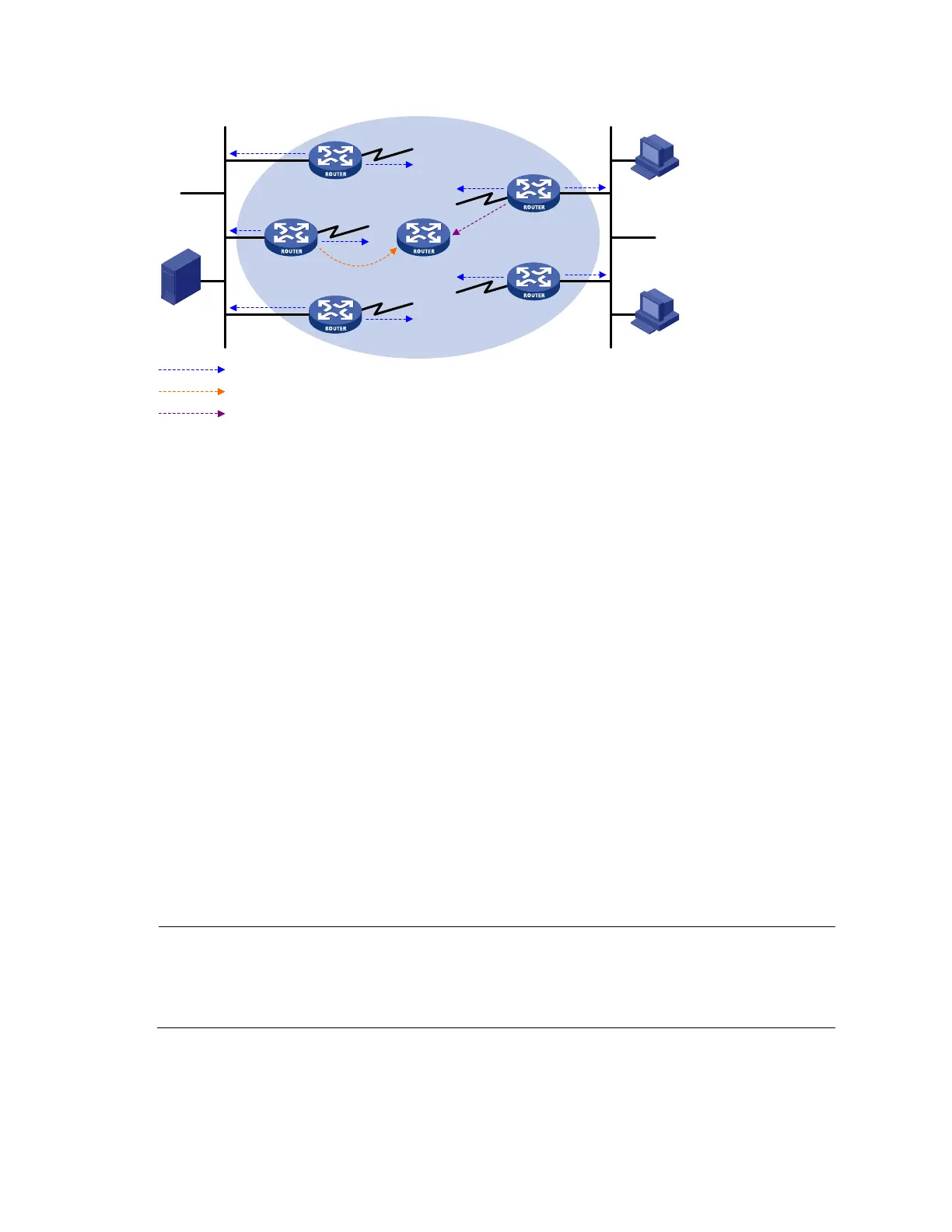